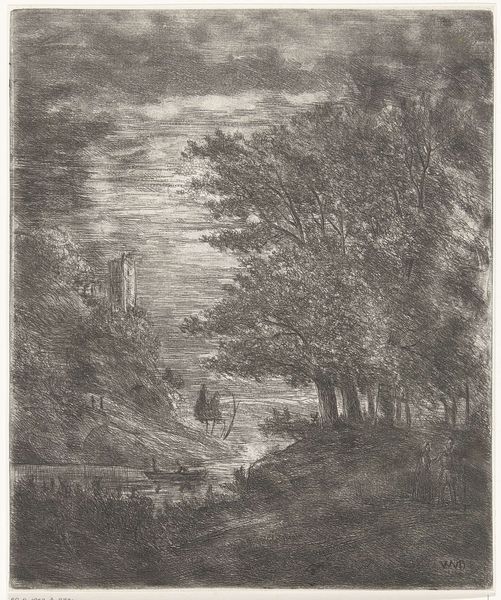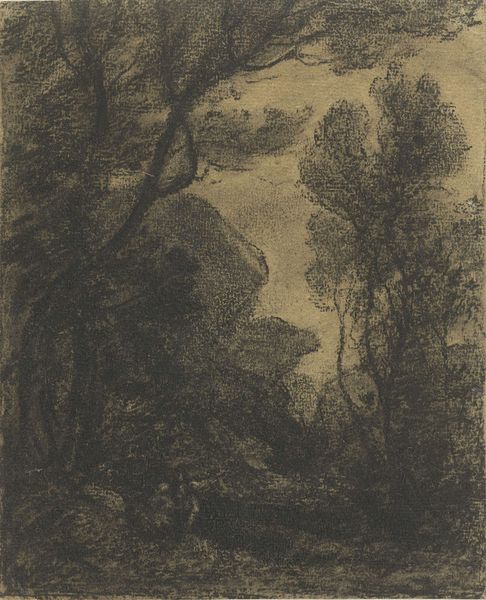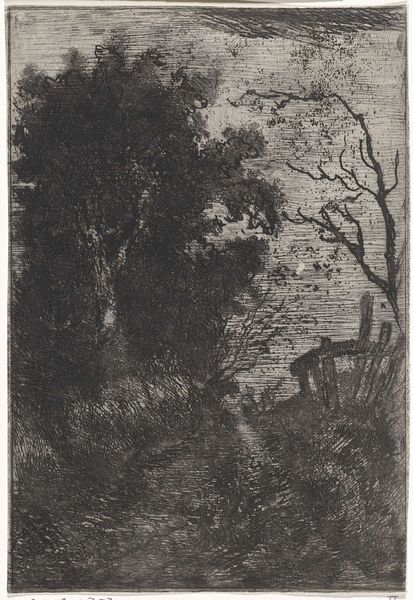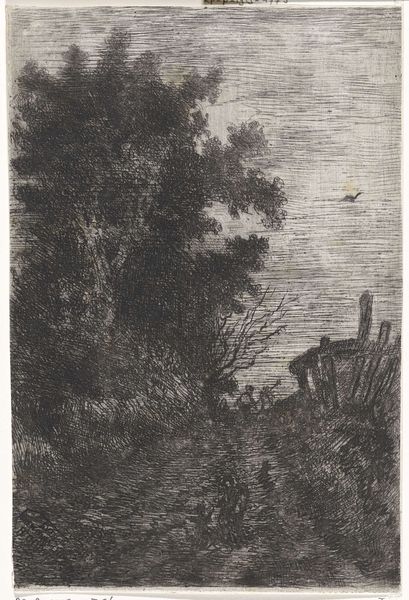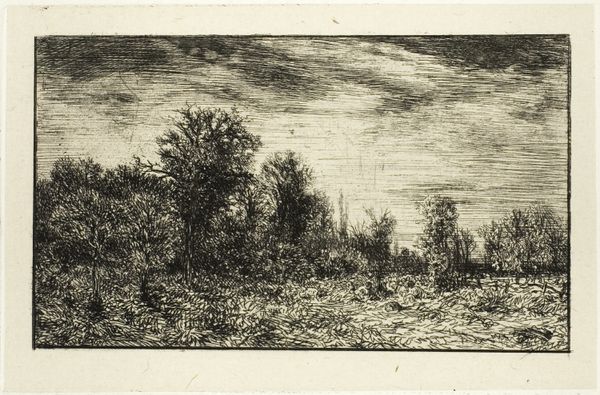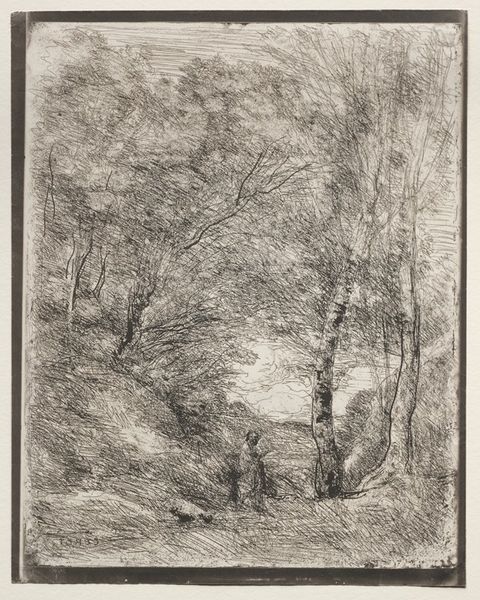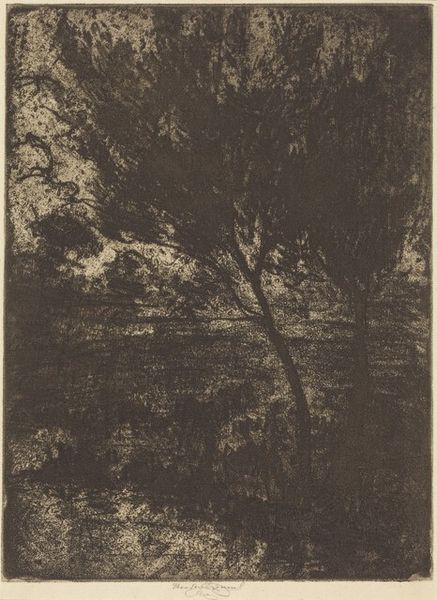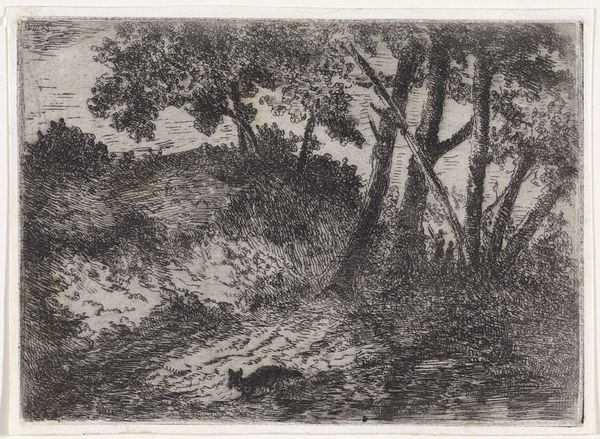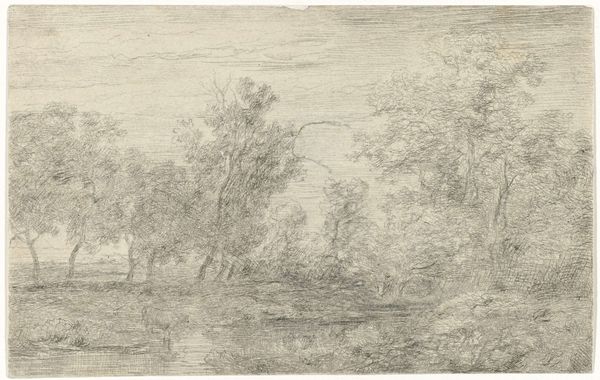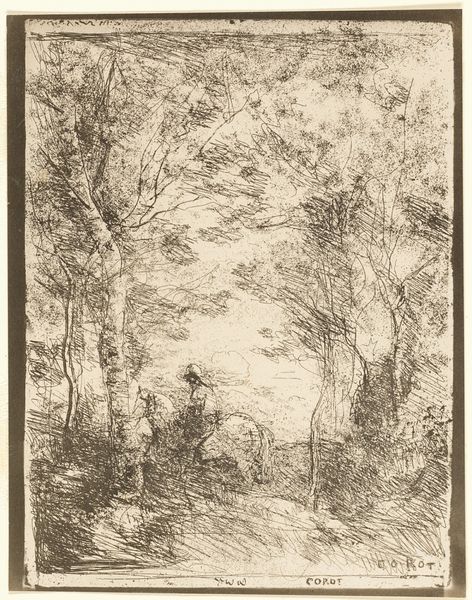
Heuvellandschap met ruïne en bootje op water bij maanlicht 1815 - 1867
0:00
0:00
drawing, etching, pencil
#
pencil drawn
#
drawing
#
etching
#
pencil sketch
#
landscape
#
pencil drawing
#
romanticism
#
pencil
Dimensions: height 263 mm, width 219 mm
Copyright: Rijks Museum: Open Domain
This landscape with a ruin by Willem Matthias Jan van Dielen evokes more than just a scene. Look at the ruin, stark against the moonlit sky. Ruins, historically, are potent symbols of the passage of time, the transience of human achievement. Consider how ruins appear in other artworks, such as those by Caspar David Friedrich. Friedrich often used them to reflect on mortality and the sublime indifference of nature to human affairs. Here, in van Dielen's work, the ruin is softer, but the underlying message persists: civilizations rise and fall, and only nature endures. The moon, too, has its own history of symbolism. Associated with cycles, mystery, and the feminine, it casts a spectral light that invites contemplation. It evokes a feeling of nostalgia, engaging with our subconscious on a primal level. It speaks to our collective memories and the emotions we associate with the past. These symbols are not static; they reappear, evolve, and take on new meanings, engaging viewers on a deep, subconscious level.
Comments
No comments
Be the first to comment and join the conversation on the ultimate creative platform.
